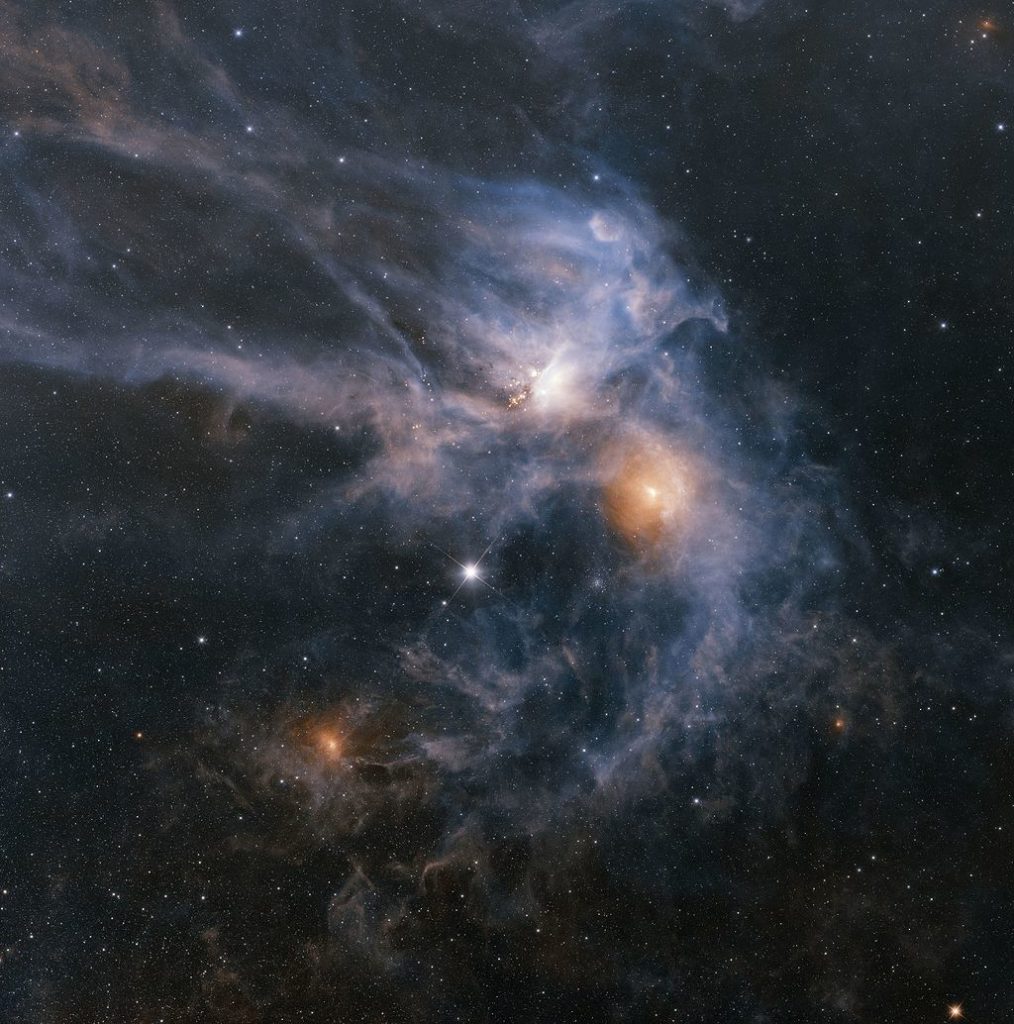In something of a surprise, we have a naked eye comet this month, comet NEOWISE! Astronomers discovered this comet on March 27, 2020 using the NEOWISE satellite. This satellite is the Wide Field Infrared Survey Explorer, later used to search for Near Earth Objects. After its discovery, Comet NEOWISE continued to approach the Sun. It reached closest approach to the Sun—perihelion—on July 3, at a distance of 27.3 million miles from the Sun (about ¾ Mercury’s average distance from the Sun).

Credit: Gerald Rhemann
Comets don’t always survive perihelion. After all, comets are just piles of rubble mixed with ice. Sometimes the stronger gravity pull from the Sun at perihelion pulls them apart. Or the extra heat might sublimate too much of the ice, leaving nothing to hold the comet together. Or the close passage around the Sun could change the comet’s orbit—into one that falls into the Sun! The good news here is that observers have seen comet NEOWISE in the days since July 3, so it did survive. What’s more, people have seen it naked-eye, so the comet brightened a bit more than expected.
Will it retain its brightness? That’s hard to say, as comets are unpredictable. Comets glow because their ice sublimates into gas, forming a bright coma and two tails, one of gas and one of the dust that had been buried in the ice. As comets recede from the Sun, they get dimmer as this process winds down. But the rate at which they will dim is hard to predict. In this case, Comet NEOWISE will be moving in the Earth’s general direction as it leaves the Sun. Closest approach to the Earth is on March 23, when the comet will be 0.69 AU away, where 1 AU is the Earth-Sun distance. How much will that affect how NEOWISE fades out? The only way to know is to watch.
For now, NEOWISE is best seen right before dawn, low in the northeast. However, it is too close to the Sun to rise in a dark sky; you’ll be looking for it against the brightening skies of dawn. NEOWISE remains less than 10 degrees (your fist at arm’s length) from the Sun until July 9. After mid-month, the comet becomes easier to observe right after sunset, when more of us are awake. It will also be farther from the Sun and thus visible in a darker sky. Let’s hope it keeps its naked-eye brightness until then. If not, you can use binoculars to appreciate it. A good finder chart is here (last image on the page).
As it turns out, the passage by the Sun did change NEOWISE’s orbit—by lengthening the orbital period to almost 6800 years. Once this comet leaves, it won’t come back until 8786.

In other celestial news, Jupiter and Saturn are up all night long this month. Look southeast in the early evening for the two planets which will be about 6 degrees apart. Jupiter is precisely at opposition, meaning that it is directly opposite the Sun in the sky on the night of July 13 (but after midnight, so technically July 14). Saturn is at opposition the following week on July 20. However, both planets rise at dusk and set at dawn all month.

Mars is higher and brighter in the morning sky each day this month. Look high in the southeast at dawn. Mars now outshines all the stars visible at night from Houston this time of year.
Venus is now visible in the east northeast at dawn. It remains a ‘morning star’ for the rest of 2020.
The Big Dipper is above and to the left of the North Star, with its handle pointing up. From that handle, you can ‘arc to Arcturus’ and then ‘speed on to Spica;’ those stars are in the west at dusk. Leo, the Lion, is also in the west at dusk.

Antares, brightest star of Scorpius, the Scorpion, is in the south. When you look at Spica and Antares, see if you notice the color difference between them. All stars seem white at first glance, but Spica is blue enough and Antares red enough for you to notice the colors by contrasting them. What you’re actually seeing is that Spica is almost 39,000°F hotter than Antares! Of course Antares, at ‘only’ 6,750°F is still quite hot.
The ‘teapot’ of Sagittarius is to the left of Scorpius, with Jupiter and Saturn to the left of the ‘teapot.’ The Summer Triangle, so-called because its stars are up all night long this time of year, has fully risen in the east. The stars of summer are here.

The Summer Triangle is high in the east. This consists of the brightest stars in Cygnus, Lyra, and Aquila. Scorpius, the Scorpion, is in the south, with the ‘teapot’ of Sagittarius to his left. Leo, the Lion, sets in the west. From the Big Dipper’s handle, ‘arc to Arcturus’ and ‘speed on to Spica’ in the southwest. Jupiter and Saturn, near the teapot of Sagittarius, are up all night long in July.
The George Observatory remains closed, but you can get a closer look at Mars with the newest installation at HMNS Hermann Park Mars by Luke Jerram.

